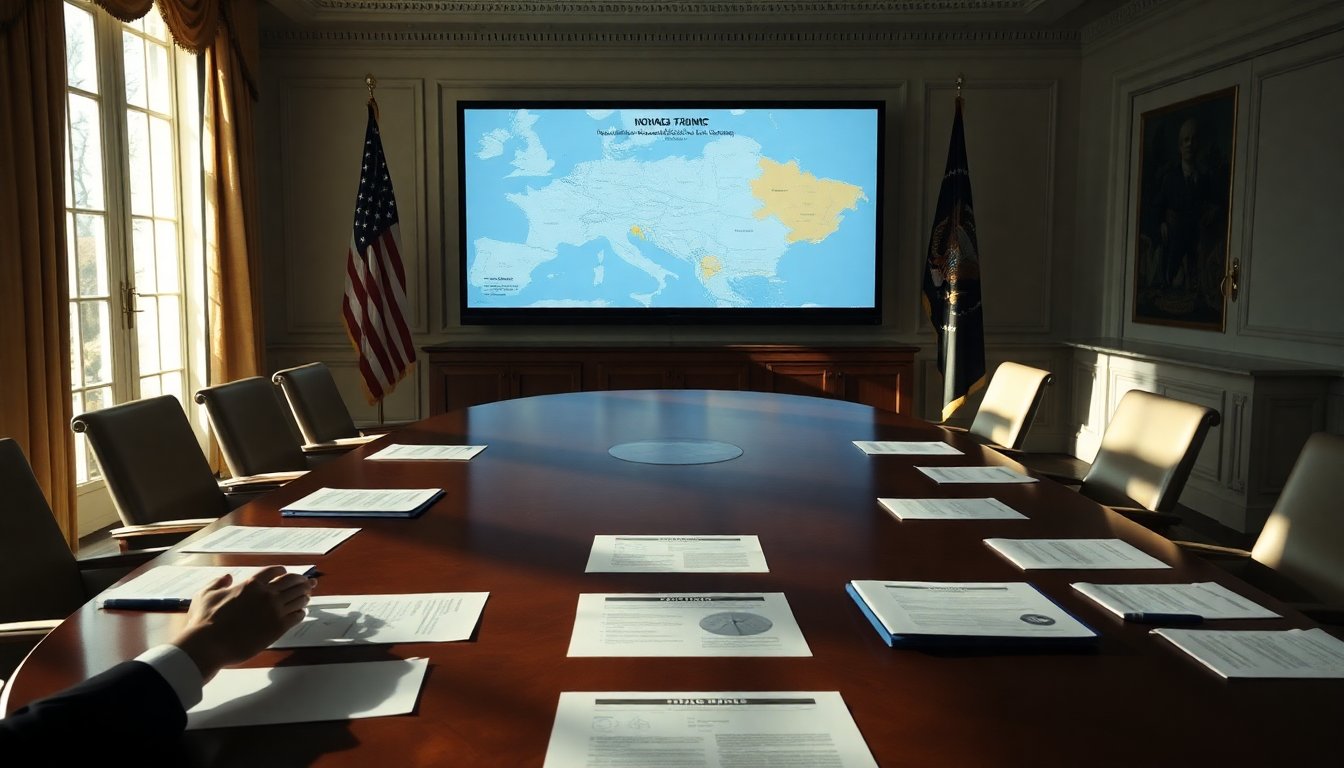Table of Contents
Following a significant breakthrough in the Middle East, where he facilitated a ceasefire in Gaza and negotiated the release of Israeli captives, U.S. President Donald Trump is now shifting his focus to another complex international situation: the ongoing conflict between Russia and Ukraine. This endeavor is marked by Trump’s previous assertions that he would resolve this conflict immediately upon returning to the presidency.
This Friday, Trump is set to welcome Ukrainian President Volodymyr Zelenskyy to the White House. This visit follows a phone call in which Trump reported making “great progress” in discussions with Russian President Vladimir Putin.
Linking successes: Middle East to Ukraine
In light of Trump’s achievements in the Middle East, Zelenskyy is hopeful that a similar strategy could be employed to put an end to the war in Ukraine. He emphasized the importance of maintaining momentum toward peace, stating via social media, “The right actions by the U.S. can also help bring an end to Russia’s war against Ukraine.” However, experts warn that the complexities of the Ukraine situation far exceed those faced in the Gaza conflict.
Different conflicts, different challenges
Charles Kupchan, a senior fellow at the Council on Foreign Relations, highlights the stark differences between these two conflicts. He notes that while the Israel-Hamas situation was approaching resolution, the war in Ukraine remains far from over. “In the case of Israel-Hamas, the war was nearly concluded; Trump merely needed to facilitate the final steps. However, with Russia and Ukraine, the conflict is ongoing and deeply entrenched,” Kupchan explained.
Another significant distinction lies in the level of influence the U.S. wields over Israel compared to its relationship with Russia. The United States is a key supporter of Israel, providing vital diplomatic, economic, and military assistance, a dynamic that does not exist with Russia. Kupchan emphasizes that Western sanctions have had limited effectiveness, particularly given Russia’s strong economic ties with nations like China and India. He stated, “The idea that we can suffocate the Russian economy into submission is not feasible.”
The complexity of military and economic dynamics
According to Maria Snegovaya, a senior fellow at the Center for Strategic and International Studies, the task ahead for Trump regarding Ukraine is significantly more complex than his recent negotiations in Gaza. “These are fundamentally different types of conflicts,” she asserts, emphasizing the need for a comprehensive strategy that may involve both incentives and consequences.
Potential military support for Ukraine
One potential strategy Trump is contemplating includes the provision of Tomahawk cruise missiles to Ukraine, which are capable of striking targets deep within Russian territory. During his call with Putin, Trump mentioned this option, humorously stating, “I did actually say, ‘Would you mind if I gave a couple of thousand Tomahawks to your opposition?'” This suggests a willingness to escalate military support for Ukraine.
While analysts agree that such missile support could enhance Ukraine’s military capabilities, they caution against viewing it as a definitive solution to the conflict. Both Kupchan and Snegovaya point out that without a significant weakening of Russia’s economic foundation, any military assistance may not lead to the desired outcome. Snegovaya remarked, “Russia typically reassesses its military endeavors when it faces severe economic constraints, but we are not at that point yet.”
The road ahead for peace talks
For Trump’s strategy to succeed, a shift in Putin’s perception is crucial. Kupchan argues that it’s essential for the Russian leader to feel that victory is unattainable and that time is not on his side. Yet, Trump’s recent actions may have inadvertently reinforced a contrary message, possibly emboldening the Kremlin to persist in its aggression.
Trump has announced plans to meet with Putin in Hungary in the near future, which would follow their previous discussions in Alaska that failed to yield progress in resolving the conflict. Despite the complexities and challenges ahead, Trump remains optimistic, stating, “Who would think I created peace in the Middle East and can’t get [Putin and Zelenskyy] to settle? But I think we’ll get them.”


